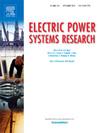电动汽车对电力系统影响的缓解策略:一种综合概率方法
IF 3.3
3区 工程技术
Q2 ENGINEERING, ELECTRICAL & ELECTRONIC
引用次数: 0
摘要
插电式电动汽车(pev)是响应电气化和脱碳政策的可持续选择。它们的广泛采用带来了挑战和机遇,特别是对于分销系统(DSs)。本文提出了一种综合概率方法,用于辅助电动汽车运营商在非协调充电场景下进行基础设施决策。通过实际案例研究,采用蒙特卡罗方法,评估了PEV充电对DSs各个方面的影响,包括电压大小、不平衡、技术损失和变压器负载。通过调整变电站变压器分接设置、修改空载分接开关(NLTCs)和安装低压调节器(LVRs)来探索缓解策略。结果表明,虽然变压器分接调整可以改善电压分布,但NLTC修改可能会加剧过电压问题。相比之下,LVR的实施显著减少了电压违规的客户单位数量,并降低了日常补偿成本。然而,当PEV渗透率超过35%时,仅仅依靠lvr可能是不够的。此外,由于LVR的独立控制和负载的增加,它们减轻电压不平衡的有效性降低。尽管如此,经济分析表明,即使在这种情况下,lvr在财务上也是可行的。敏感性分析强调了在真实的PEV建模仿真中,PEV穿透水平及其在DS内的空间分布的关键影响。总之,本研究提出了一种概率方法,以帮助dso在决策过程中加强对DSs的电压调节,全面解决因采用PEV而影响的DSs的损耗、电压不平衡和负载。本文章由计算机程序翻译,如有差异,请以英文原文为准。
Mitigation strategies for electric vehicle impact on power systems: A comprehensive probabilistic method
Plug-in electric vehicles (PEVs) are a sustainable choice in response to electrification and decarbonization policies. Their widespread adoption poses challenges and opportunities, particularly for distribution systems (DSs). This study introduces a comprehensive probabilistic method to assist DS operators (DSOs) in infrastructure decision-making under uncoordinated PEV charging scenarios. Using real-world case studies and employing a Monte Carlo-based approach, it evaluates the impact of PEV charging on various aspects of DSs, including voltage magnitudes, imbalance, technical losses, and transformer loading. Mitigation strategies are explored through adjustments of substation transformer tap settings, modifications of no-load tap changers (NLTCs), and installation of low voltage regulators (LVRs). Results indicate that while transformer tap adjustments can improve voltage profiles, NLTC modifications may worsen overvoltage issues. In contrast, LVR implementation significantly reduces the number of customer units with voltage violations and lowers daily compensation costs. However, relying solely on LVRs may be insufficient when PEV penetration exceeds 35%. Moreover, their effectiveness in mitigating voltage imbalance diminishes due to independent LVR control and increased load. Still, economic analysis shows that LVRs can be financially viable even under these conditions. Sensitivity analyses highlight the critical influence of both PEV penetration levels and their spatial distribution within the DS in realistic PEV modeling simulations. In conclusion, this study proposes a probabilistic method to assist DSOs in the decision-making process of enhancing voltage regulation on DSs, comprehensively addressing losses, voltage imbalances, and loading in DSs impacted by PEV adoption.
求助全文
通过发布文献求助,成功后即可免费获取论文全文。
去求助
来源期刊

Electric Power Systems Research
工程技术-工程:电子与电气
CiteScore
7.50
自引率
17.90%
发文量
963
审稿时长
3.8 months
期刊介绍:
Electric Power Systems Research is an international medium for the publication of original papers concerned with the generation, transmission, distribution and utilization of electrical energy. The journal aims at presenting important results of work in this field, whether in the form of applied research, development of new procedures or components, orginal application of existing knowledge or new designapproaches. The scope of Electric Power Systems Research is broad, encompassing all aspects of electric power systems. The following list of topics is not intended to be exhaustive, but rather to indicate topics that fall within the journal purview.
• Generation techniques ranging from advances in conventional electromechanical methods, through nuclear power generation, to renewable energy generation.
• Transmission, spanning the broad area from UHV (ac and dc) to network operation and protection, line routing and design.
• Substation work: equipment design, protection and control systems.
• Distribution techniques, equipment development, and smart grids.
• The utilization area from energy efficiency to distributed load levelling techniques.
• Systems studies including control techniques, planning, optimization methods, stability, security assessment and insulation coordination.
 求助内容:
求助内容: 应助结果提醒方式:
应助结果提醒方式:


